Home · Projects · 2015 · Garden 2015

Table of Contents:
Maps
A satellite image of the yard, and a slightly updated version of the drawn map. Both are from the beginning of the year before the trees and swale were added.
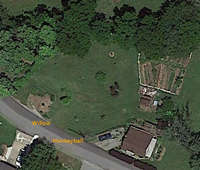
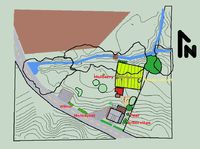
Bank Restore
For years the creek banks were slowly eroding. The erosion, in most cases, is focused on the “underneath” of the bank. This is often caused by lack of roots to hold the soil together. The lack of roots, deep roots to be more specific, is caused by mowing the lawn right up to the edge of the creek.
To combat these effects, two things must be done. First the underneath must by filled in and the roots allowed to grow deeply into the newly filled area. This presents a catch-22, if you fill in the underneath it will likely wash away before the roots can take hold of it and the roots won’t be able to grow until it is filled in.


My solution was to use a number of pallets, cut to points on one end, to cover the eroded areas. Next backfilled them as best I could. The pallets both protect the initial backfill from eroding and encourage debris to accumulate. With the pallets in place the grass is allowed to grow without ever being cut so its roots can penetrate in and around the pallet protected fill.
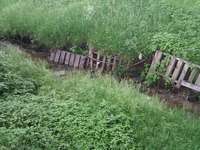
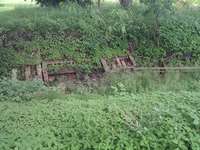
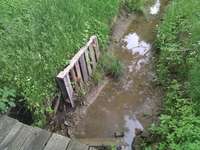

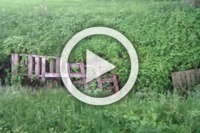
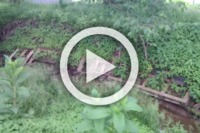
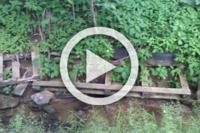
Lastly, at the end of the growing season, the grass dies back and falls down the bank. This acts as a net to help further anchor the pallets and protect the backfill during the winter.




Chicken


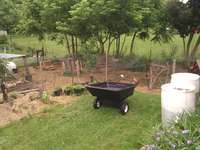
This year a rooster was added to the chicken roster. Additionally a feeder that kept the mice away from the food and a water bucket that kept them from soiling the source. Later a “roof” was built over the feeder to keep out of the elements and prevent the feed from getting soggy.


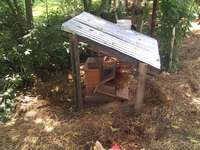

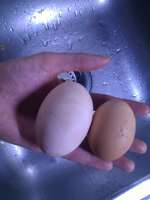
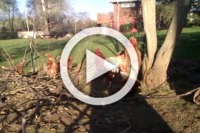
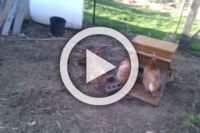
The last upgrade I made to the chicken run was an extension that uses pallets as a fence. This kept the critters in place fine and even offered them another hiding place out of the sun.
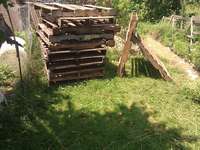
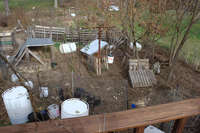
Deck
The deck was as full as ever this year. A few trays made from extra pallet wood were constructed to allow easier transportation of 20 or so cottage cheese pots. They made it easier to move between the deck and the house earlier in the year when frost was an issue.





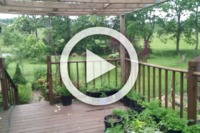
This was the first year for grapes. I only allowed a couple bunches to grow, allowing the energy to be focused on growing vines, they were deliciously reminiscent of grape juice.




A pair of pineapples were also produced this year. Being “vine” ripened made them quite a bit more delicious than the store bought once transported from Central America. They started fruiting indoors around March and didn’t finish until late September. Moving the large pots indoors and outdoors each night, since they can’t handle temperatures below about 50-55F, is simply too much of a hassle for a few pineapples. They have been relegated to non-fruiting, houseplant status.






Front Hedge
The monkeyball hedge is coming along nicely. An additional section was planted this year, essentially doubling its length. Opposite the monkeyballs are the willows that are destine to be extended until the two plants combine into a full roadside hedge.
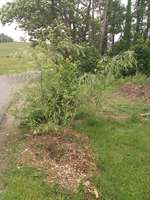
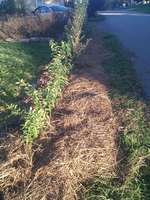
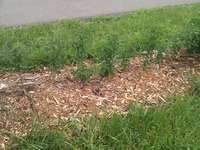





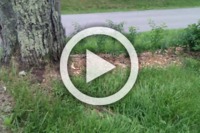

Last year Dad filled in an area below the driveway since the retaining wall was starting to lean and would have eventually led to disaster. Using fallen logs I made an edge along this new bank and allowed “weeds” to populate it while working some compost and mulch into it. Next year I will add a more permanent hedge of elderberries to this area.
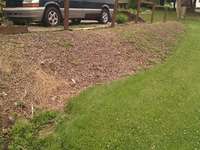





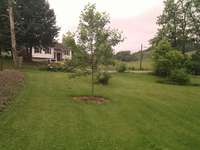

I planted 6 mulberry trees this year as well. They were protected by a bamboo cage and some orange construction fencing.
Also 6 more honeylocust trees were planted. They were tall enough to not need browsing protection. They were wrapped in plastic pipe to prevent deer from scraping them.
Front House
Nothing much to say here. The morning glories grew nicely up the poles of the front porch and a layer of mulch (chopped and dropped from trimming) was added to the front hedge.



Garden
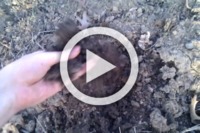
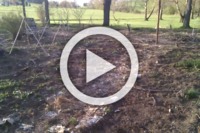



While I let the garden get a little overgrown, it was doing alright… until the electric fence charger stopped working. This was pretty demoralizing as it was just outside of its warranty. Goes to show, I should have gotten the cheapest Chinese one I could find instead of the overpriced American made Parmak garbage. I don’t blame Parmak though, the modern economy dictates using the cheapest components lest you go out of business (or charge even more exorbitant prices).



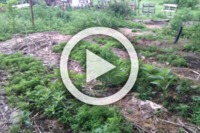
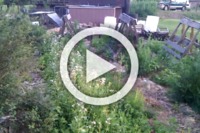
On the bright side, the honeylocust (and unpictured persimmon) trees in the garden area are doing great. The soil is also nice and dark.
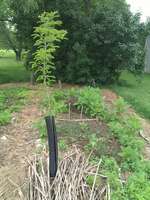




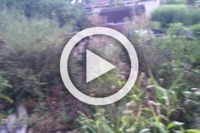
Other
In May I picked dandelions from the yard and tried my hand at dandelion wine. It was extremely easy to make, even with no special equipment. The flowers, raisins, and a pair of oranges covered in boiling water, juice from a lemon, and a few pounds of sugar is all it took. After letting them sit for a few days in a pair of pots they were transfered to recycled bottles and capped with punctured balloons acting as makeshift airlocks. A pair of rackings (transferring between bottles to remove sediment) before the final bottling and a year or patience led to some powerful and flavorful wine. So much so that I diluted it upon drinking almost 50:50 with water.
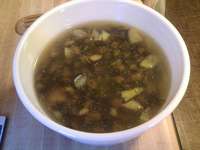
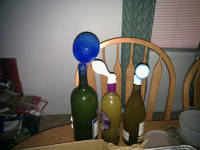
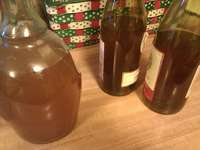

After using the center of a 55 gallon drum as a tree guard, I had the two leftover ends. I filled them with water and introduced lemna minor (duckweed) to them. It grows so fast that I can take several scoops per week and toss it into the goldfish pond where it is devoured readily. I would probably work well as a phosphorous accumulator that could be spread appropriately in the garden, but there is so little it would take a long time to add up to anything meaningful.
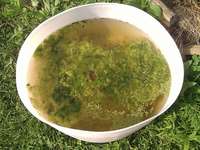

Six more honeylocust trees were planted this fall. Since the previously planted ones were doing so well, I decided to splurge and get the larges ones available. As you can see, they barely fit in the van.
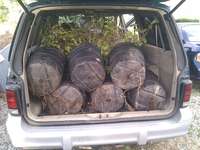
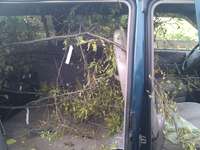
Finally, my indoor plants have been growing and multiplying like wildfire. I used some bamboo supports to construct a few frames for the epipremnum aureum (golden pothos). This will allow more foliage in a smaller footprint and therefore more air filtration.
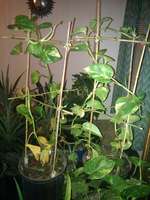
Side House
Dad covered the arborvitae side of the house this year with cardboard and overpriced mulch. From here on out we will only be using mulch that we can get for free from tree trimmers and such. I planted oregano and lemon balm around the arborvitae. There is some concern that the lemon balm may be overly aggressive, but it would simply be replacing the existing wild mint species that already choke most everything out.






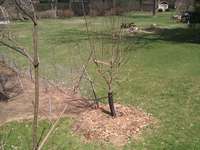




Swale
The large project this year was digging a swale. First I laid it out on contour by using an A-frame level. We live in the bottom of a valley so I couldn’t place it as high in the landscape as I would have liked and I don’t think the neighbors would have appreciated me tearing up their manicured lawns. Still, I positioned it in the highest reasonable area of the yard. During heavy rains water concentrates in the lowest spot in the yard. The far end of the swale was placed above this area to hopefully disperse future rainfall. After a few month of the wetter fall, I can say that it is working quite well.
The end opposite where the water would concentrate would also get soggy, but not as much so, because of the runoff from the house’s gutters. I positioned this end of the swale to catch this water as well and channel it away. As with the other end, this part of the yard is now drier in the winter months as well.
Initially at least, I can say this was a very successful attempt to evenly distribute excess water. Hopefully this dispersed water will also benefit the surrounding trees.
Each end is tapered to a level spillway to allow for overflow to be spread over several linear feet. Since this is a non-compacted, soft Earthwork any water flowing over the swale itself could be disastrous.
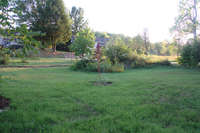



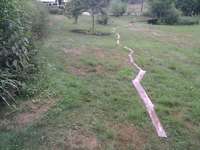
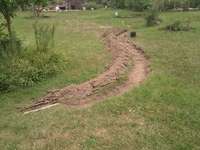
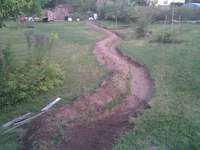






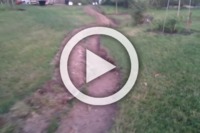
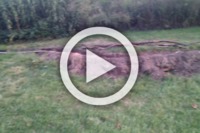
Three of the large honey locust trees were planted above the swale along with a pair of mulberry trees, although the mulberries are somewhat farther away.





Yard
A few shots of what the yard looked like before I started planting all of these trees.



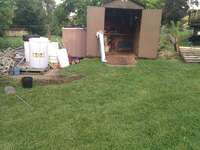
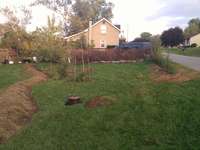



Mulch around everything. Over the coming years, as the trees mature, I plant to essentially mulch the entire yard.


The mulberry trees I got were smaller than I would have liked so I had to protect them from the marauding deer. Bamboo and some safety net worked well even if it is a bit unsightly. The honey locust are tall enough to be out of reach, but I covered their trunks in some plastic pipe to, again, dissuade damaging deer.
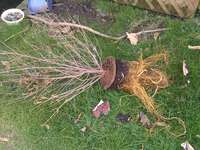


Lastly some bamboo I dug out of a guy’s yard that was offering it up on craigslist.
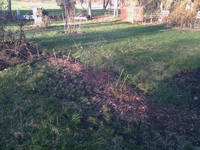
While it might look a bit barren this time of the yard, I can visualize a much busier yard. Once the trees and hedge mature, this will be much more secluded than the expansive green lawns all around.

